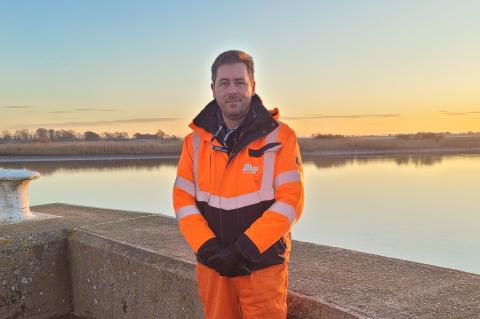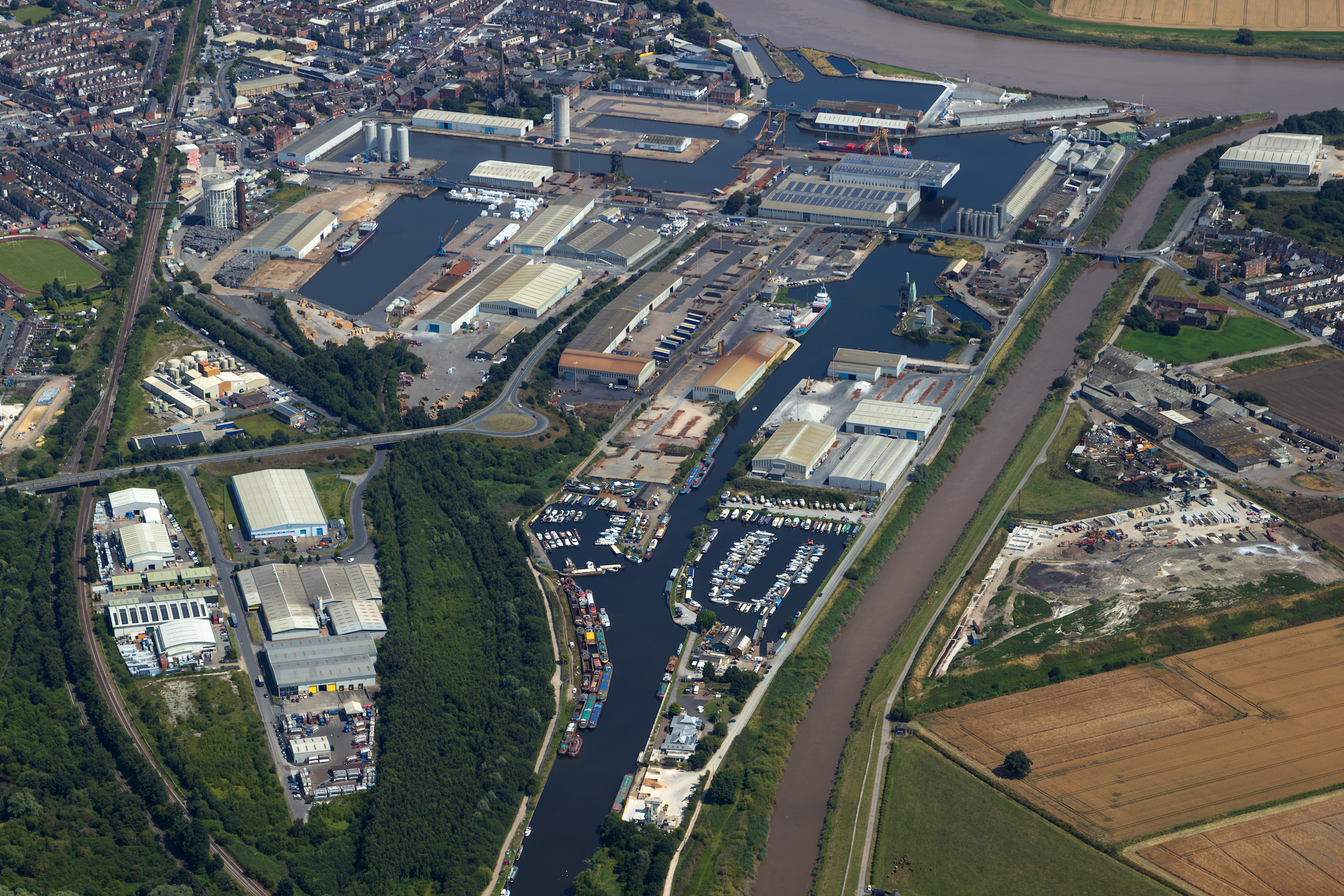Harbour Master
Harbour Masters
Worldwide there are approximately 3,000 merchant ports and the work of the Harbour Master can vary widely from country to country and from port to port even within the same country.


When Alexander Dales came ashore in 2022, he looked forward to a new role, balancing the diverse tasks of the Harbour Master in the UK’s premier inland port.
Alexander Dales has been Assistant Dock Master in the Port of Goole, UK, for just over a year now. Before joining the Associated British Ports (ABP) in 2022, his career first saw him sailing aboard chemical tankers as Third Mate, including in the Caribbean, between 2005 and 2022.
After that, he entered the offshore world, taking part in construction projects for both oil & gas and offshore wind. Having risen through the ranks, and following some turbulence in the sector, and post Covid, he decided it was time to start working on dry land. At that point, he became interested in the role of Harbour Master, primarily due to the role’s diverse and challenging nature.
“You could ask why I, or any Harbour Master chooses to pursue this route. After all, the other option, to become a pilot, offers a higher financial reward. But I saw the wide variety of topics it covered, and I enjoy the problem solving that goes with the territory.”
Going to Goole
Alexander’s first role with ABP involved putting his chemical sector expertise to use at the Saltend Chemical Park on the Humber. Soon though, the opportunity came up to take on the role of Assistant Dock Master in Goole.
The job title might be a little different but, he explains, his role involves the same concerns with safety, sustainability and efficiency familiar to any Harbour Master.
Safety in the heart of the town
“Safety is particularly important to us in the Port of Goole. We are located right in the heart of the town – we literally have pedestrians walking across our lock gates on their way to work or when out for a stroll. We have to keep a very close eye on things.
Goole is the UK’s premier inland port, situated 50 miles from the open sea at the mouth of the Aire and Calder Navigation. It is a busy location, handling some 1.5 million tonnes of diverse cargo per year.
“It’s all about managing the risk. We have a lot of CCTV in place – obviously we can’t go opening gates and locks if there are people in the vicinity. And we have pre-programmed call outs alerting people when something is going to happen.”

Striking a balance
A further incentive to maintain a close eye on safety are the two marinas adjacent to the port. Their presence ensures that there is a flow of pleasure craft – captained by people with varying levels of experience and awareness – sharing space with large, commercial vessels.
“To maintain the safety of those using the water recreationally we operate a local port service radio station, ensuring close communication at all times.”
It is, he admits, a juggling act.
“We’re in a unique position where there are a lot of different groups of people using the port area – and its infrastructure – for different purposes. You have to constantly weigh things up. You’re trying to strike a balance so that everyone can go about their business, but at the same time, it’s a commercial operation and, being so far inland, we’ve only got a four-hour tidal window in which large vessels can safety operate.”
A unique environment
An added complication for the port is its unique environmental characteristics.
“Historically we were a coal port and are situated at the end point of an extensive canal network, and that has left us with a legacy. As a result of these previous operations, there is some legacy contamination contained within dock sediments, which means we cannot currently remove maintenance dredged arisings out into the River Ouse for onward dispersion. We are managing this risk, however, and will continue to monitor this situation closely. We have, for example, an emergency berth 7 miles downstream where ships can dock if the water level is insufficient.”
The River Ouse is, furthermore, one of the most surveyed in the UK, with ABP carrying out hydrographic surveys every seven days. The close observation of the environment is having a positive effect on the local wildlife, with dolphins frequently swimming 40 miles inland and a family of resident otters in the port.
Tackling an invasion
Not all the creatures taking advantage of the situation are so welcome, however.
“Just recently, we had someone here from the Environment Agency. Like a number of ports on both sides of the North Sea, we have Chinese mitten crabs in the local waters. They burrow into the riverbanks, causing damage, and outcompete the native species. At this stage, the agency is trying to establish how far they have managed to spread, in order to be able to manage the threat.”
The mitten crabs arrived in the south of the country in the 1930s in ships’ ballast water. Since then, they have spread far and wide, wreaking environmental havoc as they go. There is, however, a hope that the numbers could possibly be reduced in the future.
“They’re very tasty, apparently, so, who knows, maybe they could find their way onto the restaurant menu as a means of population control!”
The road forwards
Like ports around the world, Goole is looking ahead. There are a number of challenges to consider.
“We recently had a vessel call at the port that was sailing with wind assisted propulsion. It had 22-metre-high e-sails. For an inland port like us, that’s something to consider – the vessel had to sail underneath electric cables. We had to check the air clearance and the approved arcing distance with the National Grid.”
Continual learning
A further area of consideration is vessel autonomy – how to prepare for autonomous ships and ensure that the correct infrastructure is in place. There is, Alexander says, always something new to learn.
To those ends, he has recently enrolled on the Lloyd’s Maritime Academy Harbour Masters Diploma, for which he has received a bursary from the IHMA.
“Every day, I receive phone calls on a range of different topics. I’ve done my time at sea and some of them I have experience with, and I know immediately how to respond. But there are always going to be things you don’t learn so much about onboard – shoreside legislation, for example – which are certainly very useful in this role. So, I’m looking forward to expanding my knowledge further.”
Global network
He is, he says, in situations such as this, also grateful for the global network of the IHMA.
“It’s very valuable to have a network of people you can turn to for support when you encounter a situation you are less familiar with. The key thing about the IHMA is that it is international – as are the duties of the Harbour Master. We have the Port and Marine Safety Code in place in the UK, for example, but there remains the question of how we can relate this to international shipping. When you have vessels calling from all over the world, with crews speaking different languages, it can throw up some interesting questions. With the IHMA, there’s always someone who has been there before, and who is willing to provide the benefit of their experience.”
The International Harbour Masters Association (IHMA) and the Port of Rotterdam Authority are pleased to announce the 15th International Harbour Masters Association Congress, to be held from 09–12 June 2026 at Theater Zuidplein in Rotterdam.
Naresh Sewnath, Senior Harbour Master at Transnet National Ports Authority (TNPA) in South Africa’s Port of Durban, began his maritime career back in 1988. He started out as a cadet with TNPA (then known as South African Transport Services (SATS).